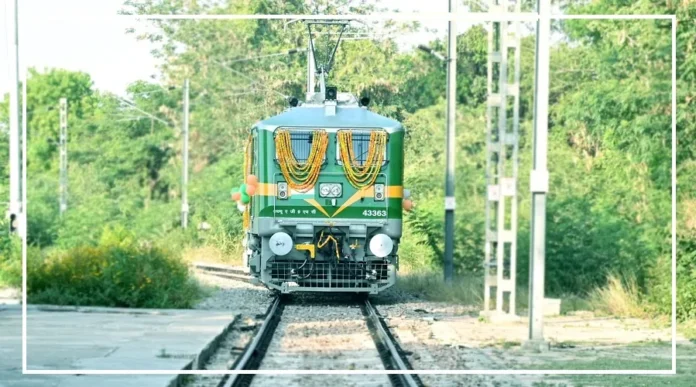Indian Railways has made a major step toward ‘zero accidents’ by dispatching its first locomotive equipped with the indigenous Automatic Train Protection (ATP) system, called Kavach, from the Electric Loco Shed in Ajni, Nagpur.
This milestone marks a key moment in modernising safety technologies across India’s railway network.
Kavach: India’s Own Anti-Collision System
Kavach is 100% Made in India under the Aatmanirbhar Bharat initiative.
It is a SIL-4 certified Train Collision Avoidance System (TCAS), the highest safety standard in global railway signalling.
The system is designed to prevent:
Overspeeding
Signal passing at danger (SPAD)
Train-to-train collisions
Accidents caused by human error
The first locomotive equipped with Kavach is a wide-gauge AC three-phase freight engine supplied by a Hyderabad-based private firm.
It comes with all essential hardware including a central computer, radio antenna, RFID reader, brake interface unit, and operational panel.
How Kavach Improves Safety
Kavach continuously monitors train movement, braking distance, signal status, and level crossings.
If a driver fails to respond, the system automatically applies brakes, providing multiple layers of protection.
Key features include:
Real-time communication between locomotive, station, and trackside RFID tags
GPS-based time synchronisation for precise operation
Automatic whistling at level crossings
SOS emergency stopping to prevent multi-train collisions
Reliable performance even in fog or low visibility
Data exchange every two seconds for proactive collision prevention
Testing and Mass Deployment
Before deployment, Kavach was rigorously tested at Ajni shed to validate automatic braking, in-cab signal display, speed enforcement, and emergency alerts.
These tests ensured the system works flawlessly under real-world conditions.
In the first phase, Indian Railways plans to equip around 10,000 locomotives with Kavach.
At Ajni shed alone, all 312 three-phase locomotives will soon have the system installed.
With Kavach, Indian Railways is moving closer to a safer, smarter, and accident-free rail network.
